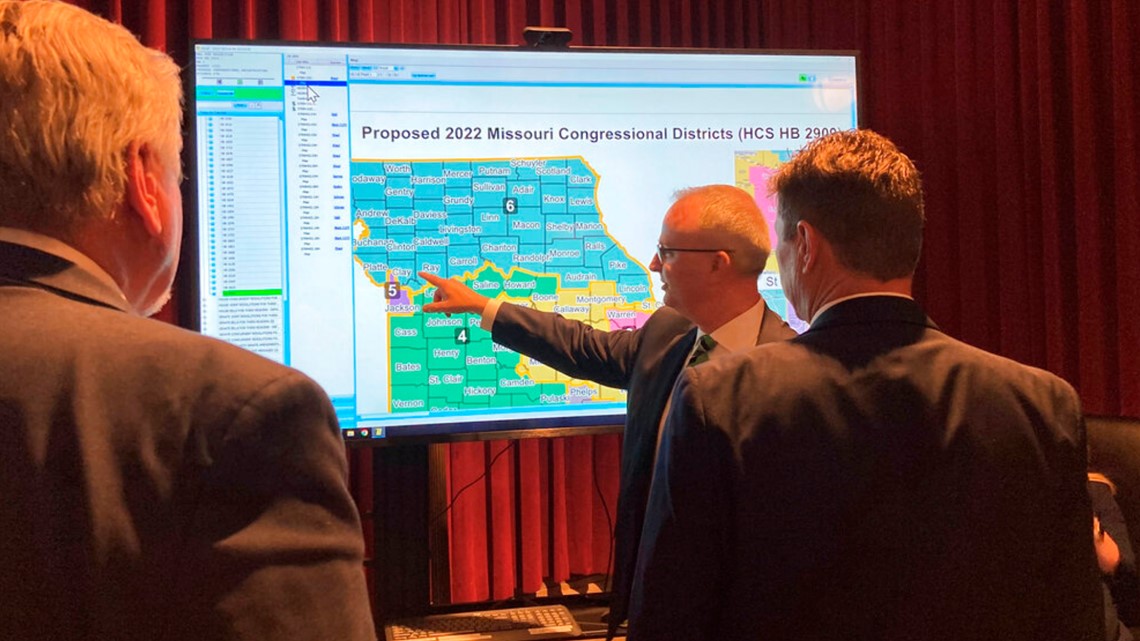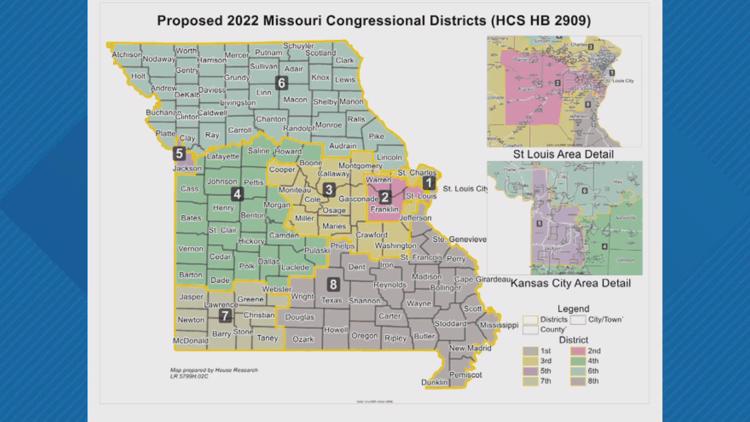JEFFERSON CITY, Mo. — Missouri Gov. Mike Parson signed new U.S. House districts into law Wednesday that are expected to shore up Republican strength in the state's most competitive congressional district ahead of this year's elections.
The new voting districts took effect immediately, meaning they will be place for the Aug. 2 primary. But local election authorities will have to scramble to make the behind-the-scenes changes necessary for absentee ballots to be available by next month.
Parson's signature on the redistricting legislation capped a rocky process that revealed deep schisms between Republican leaders in the state House and Senate and some conservative GOP lawmakers, who had pushed to more aggressively gerrymander districts to the GOP's favor. That map that ultimately passed is expected to continue Republicans' decade-long 6-2 advantage over Democrats in the state's congressional delegation.
Finally breaking an impasse, the Missouri Legislature gave final approval last week to HB2909, which establishes new boundaries for Missouri's eight congressional districts. The former swing state has trended increasingly red in recent years.
Missouri had been one of the last states to enact new U.S. House districts based on the 2020 census. That's because Republicans who control both legislative chambers spent much of their session squabbling among themselves over how aggressively to draw districts to their advantage and which communities to divide while balancing the population among districts.
Because the new districts took so long to pass, Republican Secretary of State Jay Ashcroft has warned that local election authorities may not have enough time to accurately adjust everyone's voting addresses before ballots are prepared for the Aug. 2 primaries. As a result, he said it's possible that some voters could be given the wrong ballots.


Missouri has just one congressional district that's relatively competitive — the 2nd District in suburban St. Louis, held by Republican Rep. Ann Wagner. Republicans made it a priority to fortify that district against Democratic gains.
The new plan strengthens the Republican vote share there by 3 percentage points over the current districts, according to an analysis by legislative staff that focused on top-of-the-ticket election results from 2016-2020.
Republican voting strength would be reduced by a similar margin in the nearby 3rd District, which wraps around the St. Louis area before stretching westward to central Missouri. But the GOP would still hold a sizable advantage there.
The redistricting plan also redraws the 5th District to focus more narrowly on the Kansas City area — aiding Democrats — instead of extending it into rural areas as is currently the case.
One of the communities most affected by the redistricting plan would be Columbia, the state's fourth-largest city and home of the University of Missouri. A dividing line running through downtown would shift the university campus and the city's southern side into the 3rd District while the northern portion would remain in the 4th District that extends westward to the Kansas border.
Some lawmakers said it didn't make sense to try to mesh Kansas City residents with rural voters.



